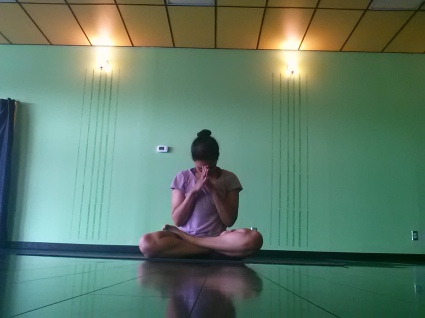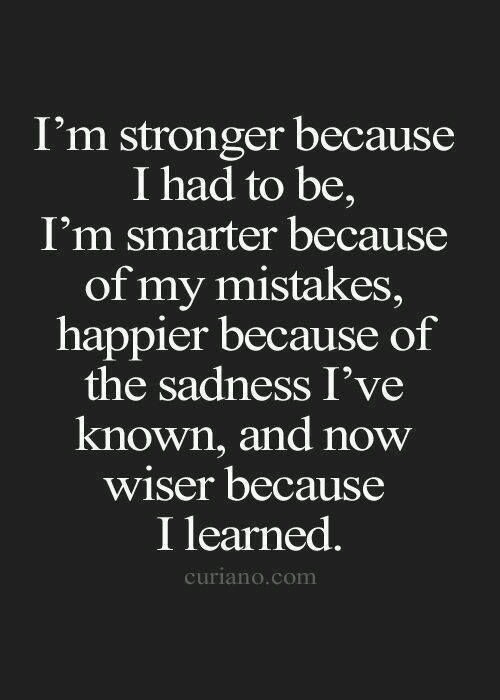https://www.jbrownyoga.com/blog/2017/12/yoga-greatest-challenge
Category Archives: Uncategorized
Understanding the secret meaning of Ganesha
Svdhyaya: Self-Study–Painting the Perfect Portrait
 The Niyamas, Yoga’s second limb of practice, provides moral guidance on the path. A strong component of finding moral balance is self-study, to quote the Greeks, “Know thyself.” When we know ourselves, we can better navigate our interactions with others. We can choose to respond or not; reacting without understanding occurs less.Svdhyaya resembles painting a self-portrait. It requires observing yourself with the keen and objective eye of an artist. You observe and record how you think, how you feel, and how you respond in a variety of situations then lay those lines and colors on a mental canvas. You meditate on what you’ve observed and
The Niyamas, Yoga’s second limb of practice, provides moral guidance on the path. A strong component of finding moral balance is self-study, to quote the Greeks, “Know thyself.” When we know ourselves, we can better navigate our interactions with others. We can choose to respond or not; reacting without understanding occurs less.Svdhyaya resembles painting a self-portrait. It requires observing yourself with the keen and objective eye of an artist. You observe and record how you think, how you feel, and how you respond in a variety of situations then lay those lines and colors on a mental canvas. You meditate on what you’ve observed and
Svdhyaya resembles painting a self-portrait. It requires observing yourself with the keen and objective eye of an artist. You observe and record how you think, how you feel, and how you respond in a variety of situations then lay those lines and colors on a mental canvas. You meditate on what you’ve observed and renew
your efforts. Like any artist, you refer to the greats who have proceeded you in this work–the sages, the prophets, the scholars and spiritualists. Some of them have left behind art, but most of them can be found in lines of scripture. Contrary to what some would have us believe, masterpieces do not emerge in isolation. There are teachers and influences everywhere.
When we practice svdhyaya, we learn choose our actions based on what we know about how and why we do what we do. We understand our personal motivations and intentions. With this understanding comes wisdom. This wisdom allows us to choose to act–if we should choose to act–to do so in alignment with right thought, right word, and right action.
Where is the battlefield in the Bhagavad Gita?
This question reminded me of this Bible passage :
“34 “Do not think that I came to [ac]bring peace on the earth; I did not come to bring peace, but a sword. 35 For I came to set a man against his father, and a daughter against her mother, and a daughter-in-law against her mother-in-law; 36 and a man’s enemies will be the members of his household.
37 “He who loves father or mother more than Me is not worthy of Me; and he who loves son or daughter more than Me is not worthy of Me. 38 And he who does not take his cross and follow after Me is not worthy of Me. 39 He who has found his [ad]life will lose it, and he who has lost his [ae]life for My sake will find it.”
Matthew 10: 34-39
The battle field is the terrain of our day to day existence. If we choose to take up a spiritual path, we inevitably meet with resistance, because eventually you will likely find yourself outside the norm–even with friends and loved ones. If we choose to pursue our higher Self, we must exercise detachment in our earthly relations, and choose the right actions to achieve Union with Self (and God if you’re religious). In doing so, we shed our old understanding and way of living and take up a new one.
Jnana Yoga: Learning to Know What You Know
Jnana Yoga, the path of knowledge and wisdom, challenges us to know what we know. By questioning our selves regarding our beliefs and perceptions and studying the natural and man made orders of the world, we learn to examine and quiet our thoughts. By thoroughly knowing ourselves and our world, the follower of Jnana Yoga achieves liberation, perfect union.
“JNANA YOGA: THE YOGA OF WISDOM
Jnana (wisdom or knowledge) is considered the most difficult of the four main paths of Yoga, requiring great strength of will and intellect. In Jnana yoga, the mind is used to inquire into its own nature and to transcend the mind’s identification with its thoughts and ego. The fundamental goal of Jnana yoga is to become liberated from the illusionary world of maya (thoughts and perceptions) and to achieve union of the inner Self (Atman) with the oneness of all life (Brahman). This is achieved by steadfastly practicing the mental techniques of self-questioning, reflection and conscious illumination that are defined in the Four Pillars of Knowledge. ”
Source: Yoga Basics.com
Bhagavad Gita: Getting to Know Arjuna
I’ve read the Gita about three times. This will be the fourth. The first time, it was a vague blur. The second time, I actually caught the conversation. The third time, I began to understand.
My first response to Arjuna was, “Geez, what a whiner,” but aren’t we all at some point–whiners? Then, I realized it was a family feud which put a different color on things. I had a little more empathy for his level of angst. However, his family (greedy uncle) was more than a little lousy.
We can’t choose our families or all of our circumstances, but we can choose our actions. We can use our understanding of karma to live well. Krishna teaches Arjuna that karma is not reflexive, but cummulative. Which means, we can through our choices build a fulfilling and worthy life.
How does Karma work?
Here’s a pretty good explanation of karma. Take away–Karma is not the equivalent of fate:
http://hinduism.about.com/od/basics/a/karma.htm
Monday Outlook: Keep Your Head Up
Monday Outlook: Time to Get Back in the Workshop
“All I’m saying is that to liberate the potential of your mind, body and soul, you must first expand your imagination. You see, things are always created twice: first in the workshop of the mind and then, and only then, in reality. I call this process ‘blueprinting’ because anything you create in your outer world began as a simple blueprint in your inner world.” ~ Robin Sharma, The Monk Who Sold His Ferrari
– See more at: http://yoganonymous.com/yoga-inspiration-my-25-favorite-yoga-quotes/#sthash.Mgzui9ui.dpuf



